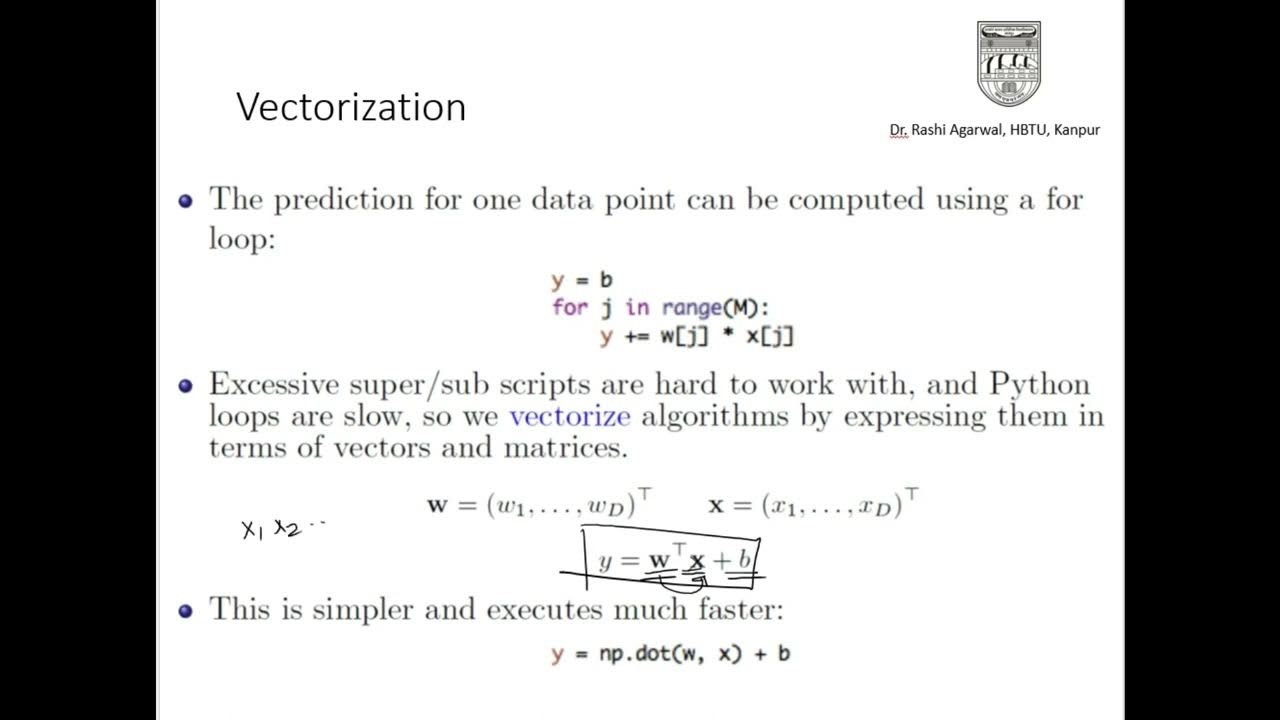Quantum Machine Learning Explained
Summary
TLDRThis video explores the exciting intersection of quantum computing and machine learning, focusing on linear classification problems. It explains how traditional machine learning techniques can struggle with complex data arrangements and how mapping data to higher-dimensional feature spaces using kernel functions can help. The video highlights the advantages of quantum computing, particularly its ability to handle complex feature spaces and its potential for exponential speedups in certain classification tasks. It also introduces IBM's Qiskit Runtime and its tools for building quantum machine learning algorithms, inviting viewers to learn more through linked resources.
Takeaways
- 😀 Quantum computing has the potential to revolutionize machine learning applications, providing advantages over classical methods.
- 🤖 Linear classification is a fundamental problem in classical machine learning, where data points are categorized into distinct groups.
- 🔄 Complex data arrangements can make linear classification challenging, necessitating the mapping of data to higher-dimensional feature spaces.
- 🔍 Kernel functions are essential for transforming data into feature spaces, allowing for improved classification in complex scenarios.
- ⚠️ Classical kernel methods can face limitations, including poor performance and high computational costs as data complexity increases.
- ✨ Quantum computers can manage and explore more complex and higher-dimensional feature spaces than classical computers can handle.
- 💡 Research indicates that quantum kernels can provide exponential speedups for specific classification tasks compared to classical counterparts.
- 📈 Ongoing studies are focused on enhancing quantum kernels, particularly for structured data and optimizing kernel alignment.
- 🔧 IBM's Qiskit Runtime offers tools and predefined programs (primitives) that facilitate the development of quantum machine learning algorithms.
- 📚 The Qiskit framework provides resources and courses for learning about quantum machine learning, encouraging further exploration in this field.
Q & A
What is the main focus of the video?
-The video focuses on the applications of quantum computing in machine learning, highlighting its potential benefits and innovations.
What is linear classification in classical machine learning?
-Linear classification is a method used to separate data into distinct categories using a linear boundary, typically represented as a line on a graph.
What challenge arises when data points are intermixed in linear classification?
-When data points are intermixed, it becomes impossible to classify them with a single linear boundary, necessitating more complex approaches.
How can complex data be classified if a linear boundary is insufficient?
-Complex data can be classified by mapping it into a higher-dimensional feature space, where the data becomes easier to separate.
What role do kernel functions play in machine learning?
-Kernel functions map the original data features into a higher-dimensional space, enabling better classification of complex datasets.
What issues can arise when using kernel functions?
-Kernel functions can produce poor results or experience significant increases in computational runtime, especially with complex or highly correlated data.
What advantages do quantum computers offer in handling machine learning tasks?
-Quantum computers can access and process higher-dimensional feature spaces more effectively than classical computers, allowing them to manage complex datasets more efficiently.
What evidence supports the efficacy of quantum kernels over classical methods?
-In 2021, IBM researchers demonstrated that quantum kernels could provide an exponential speedup for certain classification problems compared to classical methods.
What tools does Qiskit Runtime provide for quantum machine learning?
-Qiskit Runtime offers predefined programs called primitives, such as the sampler primitive, which optimize workflows and improve execution efficiency on quantum systems.
How can quasi-probabilities derived from quantum circuits be utilized?
-Quasi-probabilities can indicate relationships between different data points, forming a kernel matrix that can be used in classical models like support vector machines for predicting new classification labels.
Outlines

This section is available to paid users only. Please upgrade to access this part.
Upgrade NowMindmap

This section is available to paid users only. Please upgrade to access this part.
Upgrade NowKeywords

This section is available to paid users only. Please upgrade to access this part.
Upgrade NowHighlights

This section is available to paid users only. Please upgrade to access this part.
Upgrade NowTranscripts

This section is available to paid users only. Please upgrade to access this part.
Upgrade NowBrowse More Related Video

Computação Quântica - Fundamentos e Aplicações - Aula 07

Why Quantum Algorithms? — Programming on Quantum Computers — Coding with Qiskit S2E1

2024's Biggest Breakthroughs in Computer Science

GEOMETRIC MODELS ML(Lecture 7)

Quantum Computers, Explained With Quantum Physics

Quantum Tech | CEO Of Oxford Ionics Joining IONQ Dr. Chris Ballance | Beyond The Valley Podcast
5.0 / 5 (0 votes)